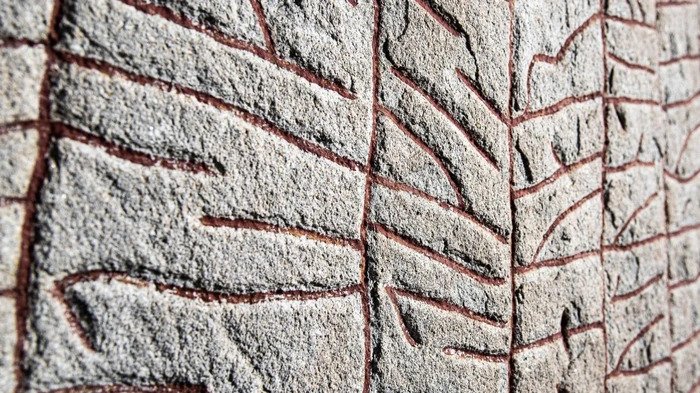1,200-Year-Old Viking Runestone May Warn of Climate Change, Study Says
Most people in the modern world are very worried about climate change and the Vikings seem to also be very worried about climate change.
Scientists are now claiming that one of the most popular runestones, erected by Vikings, shows they feared a cataclysmic fall in the temperature and terrible winters. This probably influenced the development of their culture and myths such as Ragnarök.
When they made the discovery, researchers reinterpreted this Viking runestone, known as the Rök Stone. This is a stone that is covered in runes, which are the characters of the written language of the Viking world.
It was founded in the beginning of the 9th century in the south of Sweden near Vättern lake. The BBC reports that it “believes to be the world’s longest runic inscription, with more than 700 runes covering its five sides.”
It was long believed that the stone was erected by a person of some social standing to commemorate a dead son. It also alluded to battles that took place in the past, and a reference to Theodoric, which may be a reference to the Ostrogothic king who built a powerful Germanic kingdom based in Italy.
He was one of the most powerful monarchs of his time and often simply known as Theodoric the Great. However, the meaning of the texts has remained mysterious, because the writing styles are unusual, and some important parts are missing.

A multidisciplinary study involving three Swedish Universities believes that this Viking runestone also had another meaning. Researchers from disciplines such as philology, semiotics, and history, collaborated on the study, which revealed an important allusion in the writing. They have interpreted the runes as referring to a period of extreme winter and cool summers, which the Vikings feared greatly.
The researchers in a new study state that “the inscription deals with anxiety triggered by a son’s death and the fear of a new climate crisis,” reports Live Science.
They believe that the runes refer to the climate crisis of 536 AD. A series of volcanic eruptions in the sixth century in the southern hemisphere, caused the temperature to fall, leading to very cold winters
The cooling in the climate caused harvest failures and famine. The 6th-century crisis, as it is known, led to the population of Scandinavia falling by 50%. This cataclysmic time was passed down in the folk memory of the Vikings and may have been expressed in myths, particularly in the tale of the Fimbulwinter. This was a three-year winter that would proceed Ragnarök, the end of the world.

Researchers believe that the Vikings feared that there would be a repeat of the climate crisis, even centuries after it devastated Scandinavia.
They believe that the references to battles may be allusions to drastic changes in the climate, which occurred in the 6th century. The experts argue that the battles may illustrate “the conflict between light and darkness, warmth and cold, life and death,” according to the BBC.
The Viking runestone does not only indicate an awareness of the impact of a past climate change but also a fear of a new one. Ominous events from the author of the runes are also recorded, which may have been seen as signs of an impending climate crisis.
These included a solar eclipse and a cold summer that reduced crop yields. Bo Graslund, an archaeology professor at Upsala University, told Science Alert “even one of these events would have been enough to raise fears of another Fimbulwinter,” as in the myth of Ragnarök.
Uppsala University Publications, reports that the researchers interpret the runes as referring to “nine enigmatic questions. Five of the questions concern the sun, and four of them, it is argued, ask about issues related to the god Odin.”
The exact meaning of the questions is unknown, but they would seem to suggest anxiety about the sun and climatic cooling. They may indicate a concern that the sun may fail to warm the earth, as in the 6th-century climate crisis, leading to a long winter and the onset of Ragnarök.
The researchers’ new interpretation also found similarities between the texts and “early Scandinavian poetry, especially in the Eddic poem Vafþrúðnismál,” according to Uppsala University Publications.
This new interpretation of the Viking runestone is providing new insights. It demonstrates that the fear of climate change greatly influenced the Viking’s worldview and culture. Additionally, the runestone shows them to be deeply conscious of the fragility of their society and world.
